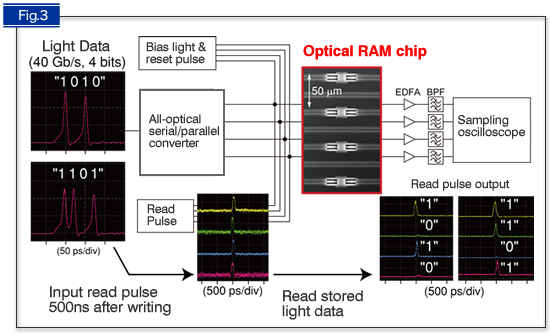The future of high-speed Internet
With the growth of data centers and data center communications, the current set of routers are not able to cope up with the amount of data flowing, thereby creating a market for photonic devices

Limited Bandwidth is one thing that is holding us back and at the rate at which mobile internet devices are being lapped up by consumers, the cap on bandwidth needs to be lifted. It is estimated that by 2016, the number of internet devices will outnumber the world’s population. Blame it on smartphones and tablets, as the world lives half its life out online. We’ve been using the same routers for the past so many years to connect to the internet, which really doesn’t do justice to the amount of data flowing through the future-proof fiber optics cables we have flowing underwater. And even though Wi-Fi removes this hurdle, with data flowing in its purest form, it still must respond to a transmitter or tower that is hard-wired to the vast global network of cables. Giving everyone their own personal fiber optics cable isn’t practical or economical to overcome this bottleneck.
 Survey
SurveyThe Telecom Regulatory Authority of India has proposed the National Broadband Plan (NBP) under which the Bharat Broadband Network Limited (BBNL) is supposed to manage and operate the National Optic fiber Network (NOFN). The main objective of the NOFN is to provide 2,50,000 villages with internet connectivity via fiber optic installataion, to help out in many areas such as education, entertainment, environment, e-governance and other services. A total of 5,00,000 km of optic fiber cable is likely to be laid under the NOFN, while the idea seems tempting, at the end of the day it is a Government of India initiative, so naturally, the actual timeline should be taken with a pinch of salt.
While we still grapple with high-speed internet connectivity, Japanese telecom giant NTT is working on what could possibly be an important component in future routers. Researchers at NTT have build an optical random access memory (o-RAM) chip to make efficient storage buffers for internet routers.They have built a 4-bit prototype which operates on 40 Gbps whereas NTT is targeting 10-kilobit to 1-megabit memory chips for future optical routers.The cell in o-RAM is actually a nano-scale photonic crystal- which is a material that channels light in small spaces. It operates between light-transmitting(1) and light-blocking states (0) to create digital signals. The technology is very light on energy consumption, using just 30 nano-watts of power and retaining data for one microsecond. This leads to more efficiency than normal electric routers, and helps maintain the high data rate transmitted via fiber optic cables. Note that even though fiber optic cables have great bandwidth, the data is routed to us via routers which have electrical innards-thereby creating a bottleneck. So even though the data enters and leaves a router via beams of light, within the router the optical to electrical signal conversion causes the speeds to reduce.
Researchers at the University of Southampton in England have produced optical fibers which can transfer data at 99.7 percent the speed of light.These optical fibers transfer data at the rate of 73.7 terabits per second that is done by fiber optic links today.The researchers employ a hollow optical fiber mostly made of air, as light travels around 31 percent slower through silica glass (which makes up the normal optical fiber). While such high data transfer may not make sense to us anytime soon, as normal optic fiber cables are good enough, but for short stretches such as in data centres and supercomputer interconnects, these high-speed fibers can be very significant.
.jpg)
